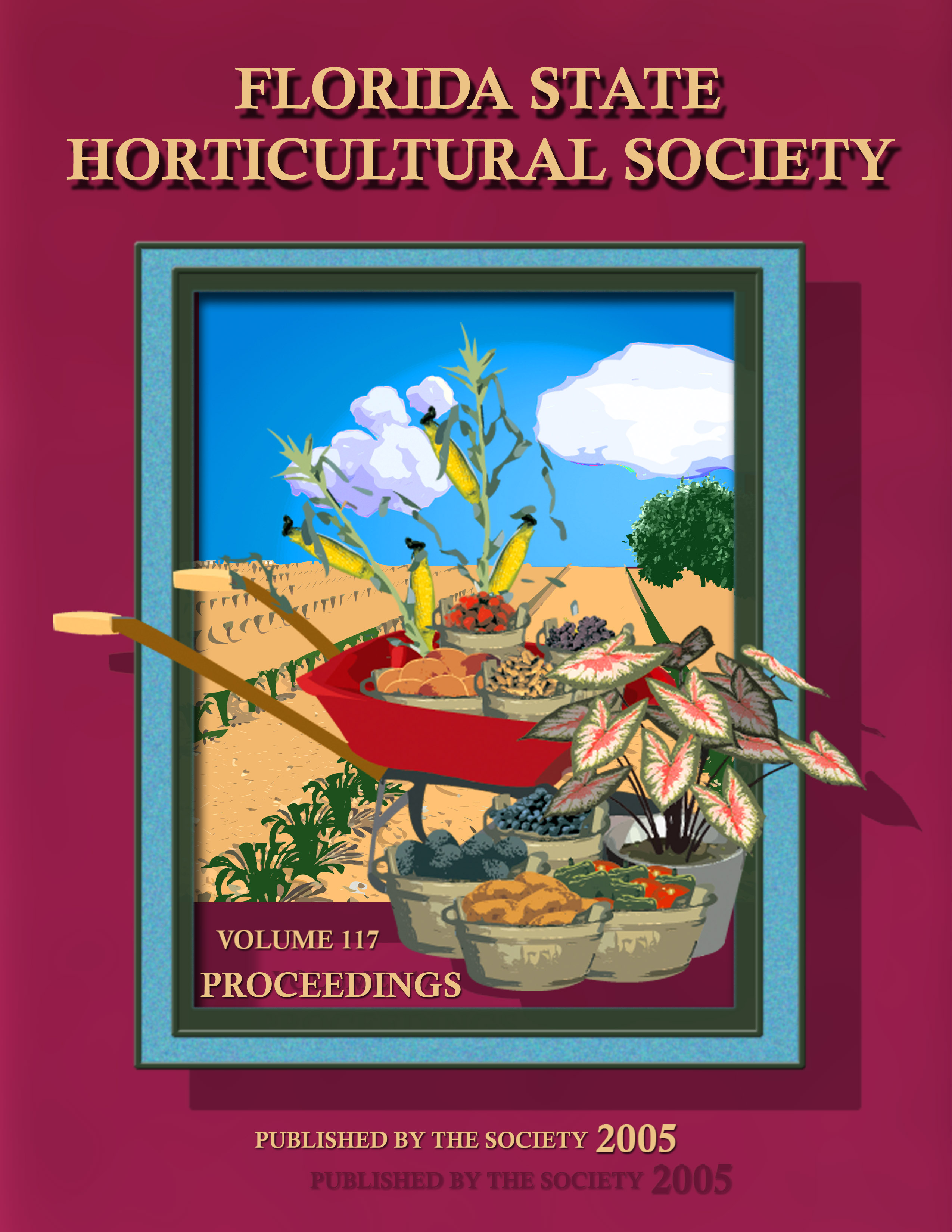Abstract
Ethylene degreening of early season citrus fruit for marketing purposes is a common practice in Florida. This practice enhances stem-end rot caused by Diplodia natalensis, but the mechanisms for this increase in decay are largely unknown. A study to determine the influence of ethylene on the natural resistance of 'Valencia' oranges to this decay was conducted. After fruit were de-buttoned and subjected to ethylene at 0, 5, and 50 ppm for 60 hours, fruit were then inoculated with D. natalensis at the stem cavity and incubated at 21 C for 2 weeks. Fruit treated with ethylene at 0, 5 and 50 ppm showed a decay incidence of 10.0, 33.3 and 73.3%, and a disease severity index of 0.3, 0.8, and 2.5, respectively. Ethylene appeared to reduce the natural resistance of fruit tissues to D. natalensis, and the degree of tissue susceptibility was positively correlated to the ethylene concentration. Evaluation of chemical control for this disease showed that a fruit drench with thiabendazole (TBZ) or Imazalil before fruit degreening was much more effective than packingline applications of these chemicals after degreening treatment. Therefore, to effectively control Diplodia stem-end rot on early season fruit at postharvest stage, fruit should be drenched with TBZ or Imazalil prior to degreening, and ethylene concentration and duration of degreening should be the minimum necessary to achieve successful degreening of the fruit.

